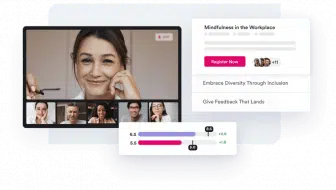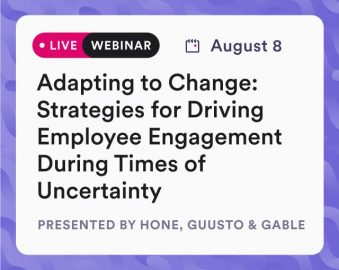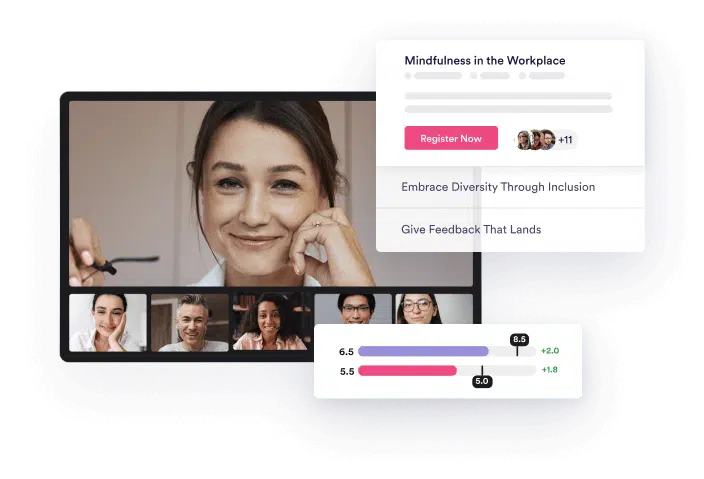There’s a lot for employees to consider before they jump to another gig. Does the new position offer exciting challenges and opportunities for growth? Will they like their new coworkers? And, perhaps more importantly, what are the benefits and perks that the company offers?
Benefits can be a game-changer when it comes to recruiting and retaining top talent, but the pandemic has thrown employees for a loop. Companies can no longer rely on flashy office-based perks – like in-office massages and ping pong tables – to win over applicants.
In the war for talent, how can companies compete? One answer: by offering the cutting-edge benefits modern employees need. In the last year, new employee benefits trends have emerged, including:
- Child care stipends
- Home office reimbursements
- Mental health assistance
- Flexible scheduling
- Professional growth
Professional growthis particularly important as many employees have felt “stuck” and stagnant in their careers in the last year. To counteract this sentiment and help employees avoid burnout, your business should offer robust leadership development programs and employee training to help your new and existing employees grow professionally with your business.
Wondering how to get started? This guide has everything you need to know about what employee development training is, your training options, and how to pick the best leadership development program for your business.
What Is Employee Development Training?
Employee development is the act of investing in your workforce by giving them the knowledge and experience they need to be more successful in their current or future roles. This training not only helps your employees move forward in their careers, but can also help your business by proactively identifying skill gaps and training your internal teams to lessen the impact of these gaps. This process allows your organization to be more dynamic and agile while staying ahead of your competition, all while investing in your talent and encouraging them to continue learning and growing with your business.
Leadership development is a subtype of employee development as it only focuses on new and existing managers. Management roles require unique skills that might not be applicable to the rest of your workers, so it’s important to create two training strategies: one for all employees and one specifically for managers. Your manager-specific leadership development programs should teach individuals skills like how to delegate, conduct performance reviews, give and receive feedback, lead highly effective 1-on-1s, and more.
So what subjects can you teach during more general employee training programs? Here are some topics your company may already have in place:
- Internal safety protocols
- Sexual harassment prevention
- Unconscious bias awareness
- Time management skills
- Diversity and inclusion
- Interviewing skills
Additionally, your training programs can teach employees and managers both hard or soft skills. Hard skills are skills that help you complete the responsibilities of a given role, like knowing Python for a software engineer or Photoshop for a designer. Soft skills, on the other hand, are traits and characteristics that affect how we interact with others, like time management or problem-solving skills.
It is crucial to note that your employee training and development programs should contain a mix of both hard and soft skills to help your employees grow. For example, having a customer service representative who knows how to use your company’s call center software is an important part of their job, but in order for them to be truly successful in their role, they’ll also need strong listening, communication, and empathy skills to efficiently and effectively help your customers.
Why Does Leadership Development Matter?
Millennials now make up more than half of the workplace and are heavily motivated by career growth. One PriceWaterhouse Coopers report discovered that 52% of millennials said the opportunity for career progression was the most important factor in determining whether they take a job—even outranking compensation. But that’s not all: these respondents also wanted to work for companies that invest in their teams’ professional growth, with 35% saying they are drawn to companies with employee training and development programs.
However, employee training and development programs don’t just revolve around classroom learning. Employees also want to learn on the job from experienced, strong workplace mentors and leaders. Unfortunately, poor management can often let employees down on this front.
According to a recent study conducted by the Society of Human Resources Management (SHRM), 84% of U.S. employees say poor management actually causes them more work and stress, and 57% agreed that their managers could benefit from receiving additional training on how to be a better people manager. More specifically, the top five skills employees thought managers needed to brush up on are:
- Effective communication
- Developing and training the team
- Time management and delegating
- Cultivating a positive and inclusive team culture
- Managing team performance
All of these skills can easily be taught to your managers and employees by investing in an ongoing training and development strategy for your organization. And don’t forget that your people leaders play the largest role in shaping the workplace experience for all of your employees, so you’ll want to take extra care to create a continuous leadership development program for them so they can grow to become better leaders for your people and help their direct reports grow in turn. 
The 4 Types of Leadership Development Programs
You might be wondering how to start creating an employee training and development program of your own. But before you start your search, you need to know exactly what type of learning environment will work best for your business and employees. Here are the four most common types of employee training programs and the benefits of each:
1. Classroom Learning
Classroom learning is the most traditional form of employee training as it brings individuals together in person to learn from a teacher. There’s a reason so many companies have favored this type of learning for so long: brings employees together allows them to practice new skills and ask the instructor questions in real-time. Unfortunately, according to one study, “students in classes with traditional lecturing were 1.5 times more likely to fail than were students in classes with active learning.” And with the closing of many offices during the pandemic and the shift to remote work, many companies had to rethink whether this training solution is right for their business.

2. E-Learning
E-learning brings employee training online and allows employees to watch pre-recorded video content to learn skills at their own pace. Employees can also take comprehension quizzes or assignments to prove their understanding of the course material, which can help your business track employee participation and progress.
Many businesses like e-learning because it allows their employees to pick and choose what courses interest them, it’s easily scalable, and gives L&D managers more insight into how well and what their employees are learning. But while e-learning is convenient, it often fails to create lasting results. Watching videos, clicking through slide decks, and taking online assessments often fails to motivate users, resulting in online class completion rates of only 5%-15%. This type of learning also falls short on the interpersonal front. Students can’t ask questions or receive immediate feedback from instructors or colleagues — a crucial need as studies have shown the impact of learning by doing on subject matter retention. Unfortunately, e-learning lacks real-time interaction, practice, feedback, social connections, and accountability.
3. Live Online Training
Live online training combines the interactivity of classroom learning with the scalability of e-learning to create a truly modern employee training and development solution. Employees can take classes from anywhere in the world and still benefit from learning alongside their peers and with a live instructor. As more employees move to full-remote status, many businesses are making the switch to live online learning solutions, like Hone. Hone empowers transformational change through expert-led cohort-based classes and a powerful technology platform while giving L&D and HR leaders data-driven insights and tools to scale and advance their organizations. Employees can practice new skills, get real-time feedback, and benefit from social learning necessary for leadership, management, and people skills development.
4. Blended Learning
As you might have guessed from the name, blended learning is a combination of all three of the above training styles. For example, an employee might take a class in-person, take a follow-up live online learning class to reinforce what the first-class touched on, and an e-learning course to introduce new ideas and test their comprehension. Most commonly, it’s a combination of classroom and e-learning courses to give employees the benefit of both types of learning while giving a business some ability to scale its L&D programs.
Employee Training and Development Made Easy
When picking the employee training and development strategy that is best for your business, you’ll need to consider your business’ and employees’ L&D needs and preferences. No one knows your business quite like you do, so carefully weigh the pros and cons for each type of learning solution and the answer will reveal itself.
If you’re looking for a scalable and sociable way for your employees to learn, Hone is here to help you tackle leadership training. Book a demo today and learn how live online learning can help achieve your L&D goals!










